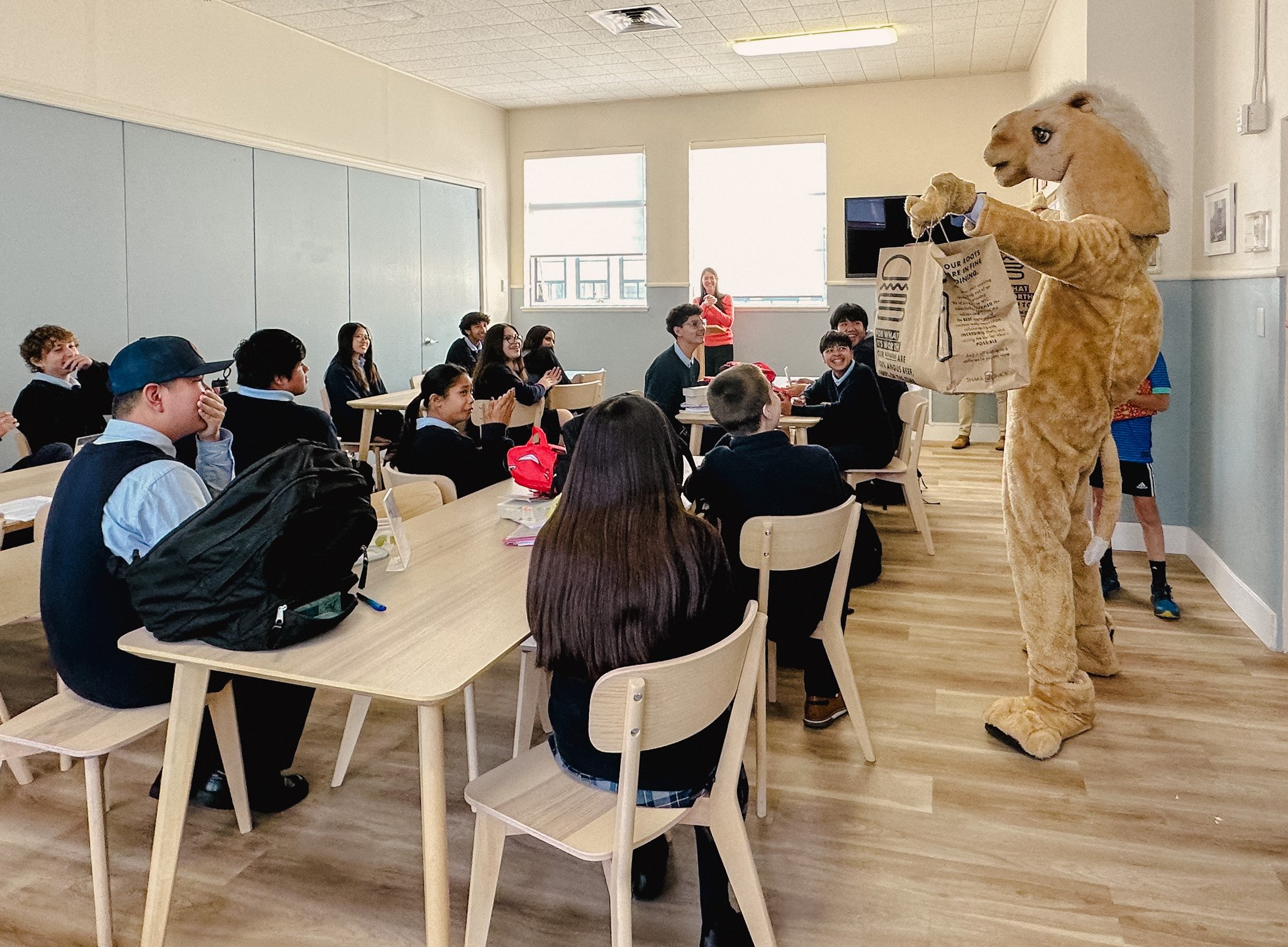Our Mascot
“Life is like a camel, you can make it do anything except back up.”
-Marcelene Cox
The etymology of the word ‘Camel’ demonstrates that in ancient language and culture, the camel was recognized as an animal built for hard work and self-sacrifice. The word is derived originally from Hebrew (gāmāl), which literally means ‘going without.’ In medieval art and sculpture, the camel was used to represent humility and the willingness to bear another's burden; largely because camels kneel down when receiving heavy loads.
Camels are not fierce or cunning. They are not built to “fight” in the genre of often used predatory animal mascots. They are working animals. They lighten the load of others. They dutifully bear the baggage and burdens of those with whom they travel. They are built for long stints in harsh conditions and they can survive months without water. When years-long droughts wipe out livestock populations, camels survive by eating plants other livestock will not - thorns, dried out leaves, and saltbush.
And yet, camels present as mostly happy and content creatures, if not a little stubborn at times. They live and travel in community, in herds. They have long life expectancies, nearly 40 years. They learn quickly, and they care for their young for almost four years, one of the longest periods of any mammal.
Being a camel is not comfortable or easy or flashy. But camels are filled with purpose, determination, and a willingness to accompany people on their journey. They are full of grit, they are humble and helpful, and in the case of the Nativity, they come bearing gifts. They can put you on their back - no matter where you come from or how far you have to go - and take you to see for yourself, a child, born in a stable, that redeemed the world.





